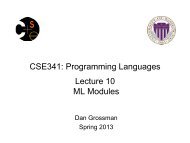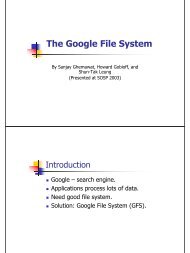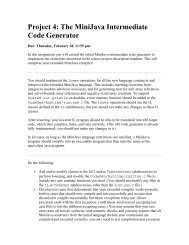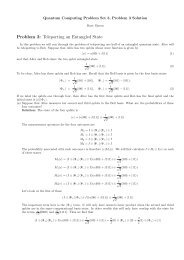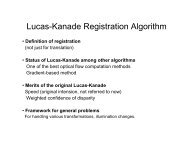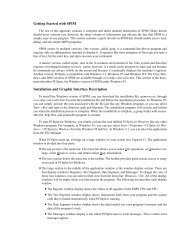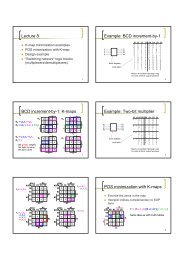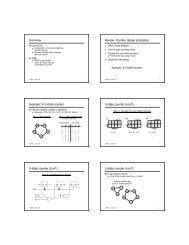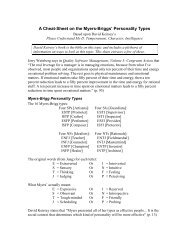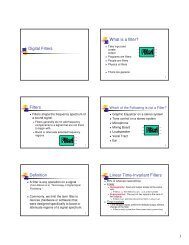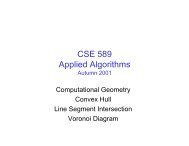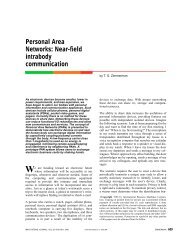How to Print Floating-Point Numbers Accurately - Computer Science ...
How to Print Floating-Point Numbers Accurately - Computer Science ...
How to Print Floating-Point Numbers Accurately - Computer Science ...
Create successful ePaper yourself
Turn your PDF publications into a flip-book with our unique Google optimized e-Paper software.
Output: Integers H and N (H 2 N 1 1) as an H-<br />
digit radix-B integer D:<br />
D = DHDH-I.. . DN+IDN(N zeros). = 5 Di x B’<br />
such that:<br />
(a) [D-d! < f<br />
(b) N is the largest integer, and H the smallest, such<br />
that la1 can be true.<br />
(c) ID -ii,‘< B”<br />
(d) Each digit is” output before the next is generated.<br />
Procedure: see Table 2. I<br />
In Algorithm (IP)l all quantities are integers. We<br />
avoid the use of fractional quantities by introducing a<br />
scaling fac<strong>to</strong>r S and logically replacing the quantities R<br />
and M by R/S and M/S. Whereas in Algorithm (FP)3<br />
the variables R and M were repeatedly multiplied by B,<br />
in Algorithm (IP)a the variable S is repeatedly divided<br />
by B.<br />
7 Free-Format <strong>Floating</strong>-<strong>Point</strong> Output<br />
From these two algorithms, (FP)’ and (IP)‘, it is now<br />
easy <strong>to</strong> synthesize an algorithm for “perfect” conversion<br />
of a (positive) fixed-precision floating-point number <strong>to</strong> a<br />
free-format floating-point number in another radix. We<br />
shall assume that a floating-point number f is repre-<br />
sented as a tuple of three integers: the exponent e, the<br />
“fraction” or “significand” m, and the precision p. To-<br />
gether these integers represent the mathematical value<br />
f= m x b(‘-P). We require m < bp; a normalized rep-<br />
resentation additionally requires m 2 b(P-l), but we do<br />
not depend on this.<br />
We define the function S/L& of two integer arguments<br />
z and n (Z > 0):<br />
shi&,(x,n) z lx x b”J<br />
This function is intended <strong>to</strong> be trivial <strong>to</strong> implement in<br />
radix-b arithmetic: it is the result of shifting x by n<br />
radix-b digit positions, <strong>to</strong> the left for positive n (intro-<br />
ducing low-order zeros) or <strong>to</strong> the right for negative n<br />
(discarding digits shifted <strong>to</strong> the right of the “radix-b<br />
point”).<br />
Algorithm (FPP)‘:<br />
Fixed-Precision Positive <strong>Floating</strong>-<strong>Point</strong> Prin<strong>to</strong>ut<br />
Given:<br />
a Three radix-b integers e, f, and p, representing the<br />
number v = f x bte+‘), withpz OandO < f < bP,<br />
l AradixB.<br />
i=N<br />
119<br />
Output: Integers H and N and digits DI, (H > k 2 N)<br />
such that if one defines the value<br />
V = 5 Di x B’<br />
i=N<br />
then:<br />
v- +v<br />
(4 -



